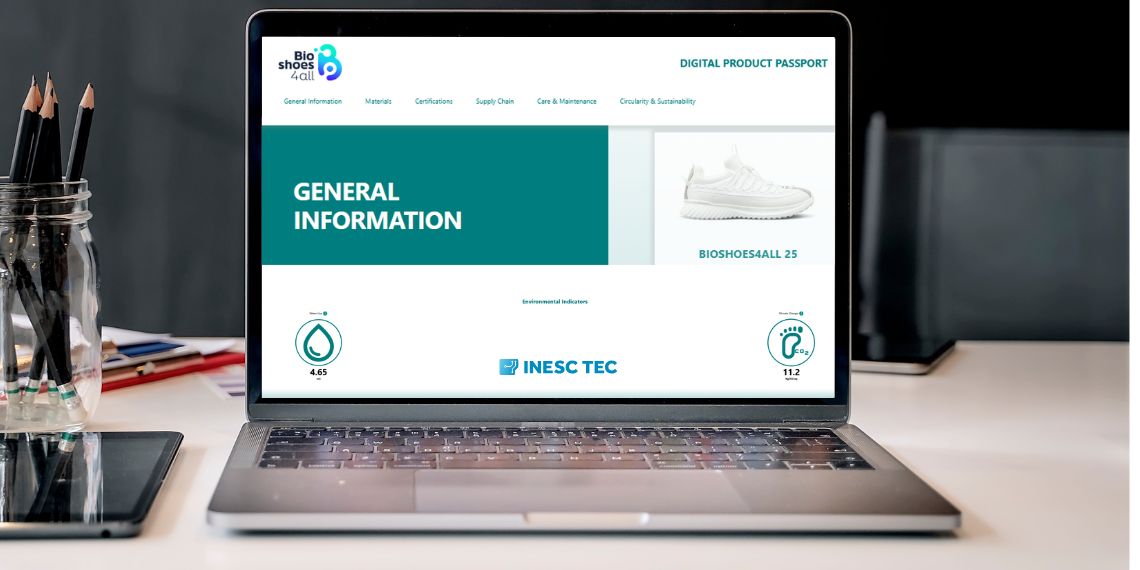As part of the Bioshoes4All project, INESC TEC is in the final development phase of a traceability solution that tracks the entire lifecycle of footwear – from raw materials to the final product. The main benefit of this system is harnessing data already being recorded in company systems, automatically using it to create a complete traceability record.
Imagine you need to buy a pair of shoes; even if you’re looking for a product made in Portugal, have you ever wondered where the raw materials come from? How many pairs of shoes were made from the same piece of leather? How was it manufactured? Are the materials recyclable?
Most current traceability solutions require companies to use external platforms and input data manually: “when I received this material”, “when I used this batch”, “when I packed this product”. INESC TEC is developing an architecture that promises to revolutionise this process. How? By leveraging data that is already being collected by companies’ internal systems.
“We’re already fully integrated with the information systems of the consortium’s companies and have real-world examples – which we’ll present on July 3. This saves time, prevents task duplication, and improves data quality,” explained Ricardo Ferreira, researcher at INESC TEC.
Developing this tool has brought up several challenges that are common in the footwear industry. These range from ensuring data sovereignty (making sure each company retains full control over information) to the difficulty of standardising the data collected across different systems. There are also technical hurdles, e.g., avoiding an increased workload for staff when integrating with existing systems, ensuring each product has a unique identifier, making information easily accessible and intuitive, and creating clear methods for digitalising processes like raw material intake or logistics batch management.
To overcome these issues, the proposed solution relies on identification standards that allow quick access to detailed product information, a distributed architecture that ensures security and control, and interoperability as a core principle – reducing the need for major changes to companies’ IT infrastructures. “Moreover, the tool was designed in line with the future Digital Product Passport, addressing increasing demands for transparency and traceability throughout a product’s lifecycle,” added the researcher.
With a flexibility-based design, this solution is scalable and adaptable to companies at different stages of digital maturity. A major benefit is that it allows companies to control their own data without compromising the interoperability of the system.
“Less digitalised companies can start by using QR codes to identify products, and as they progress in their digital transformation, they can evolve towards more advanced traceability models. This architecture not only anticipates future European regulations, but also supports circular economy practices, encouraging product maintenance, reuse, and recycling,” mentioned Ricardo Ferreira.
From the lab to the factory floor, this tool could become as essential to the footwear sector as GPS is in our daily lives – giving us the support we need.
The researcher mentioned in this news piece is associated with INESC TEC



 News, current topics, curiosities and so much more about INESC TEC and its community!
News, current topics, curiosities and so much more about INESC TEC and its community!